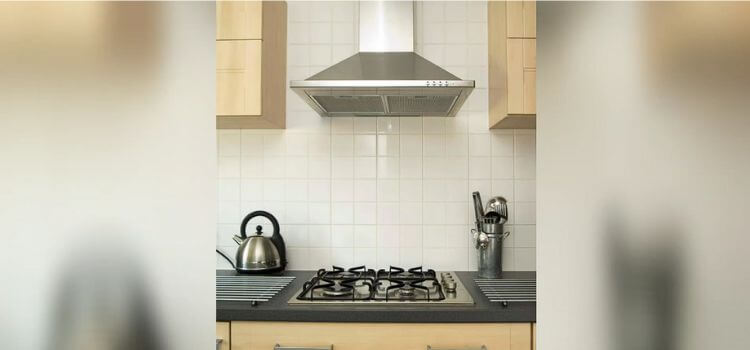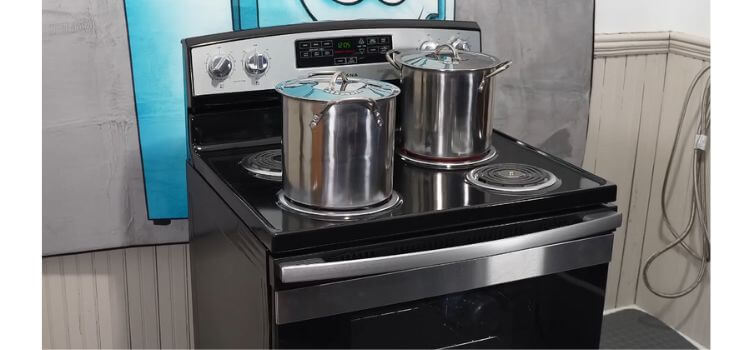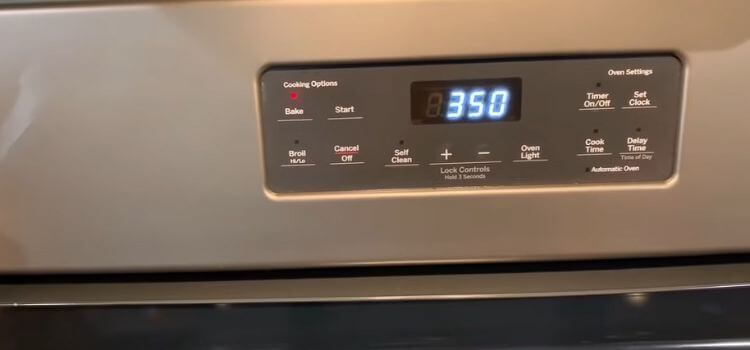Gas stoves are a favorite in many kitchens because they heat up quickly and let you control the temperature easily. They are common in restaurants and home kitchens alike. But with their common use comes an important question: how can you keep your cooking space safe and healthy?
This is where kitchen ventilation comes in. Good ventilation not only removes bad smells and grease but also protects your health by getting rid of harmful gases and smoke.
So, do gas stoves really need a vent? In this guide, we’ll explore why venting your gas stove is important, looking at the reasons, safety tips, and best practices to keep your kitchen safe and efficient.
Why Ventilation is Important
Ventilation is Important for several reasons. When you cook with a gas stove, it burns fuel to create heat, a process called combustion, which produces byproducts such as water vapor, carbon dioxide, and carbon monoxide. These byproducts need to be removed from your kitchen to keep the air safe and clean. If your kitchen is not properly ventilated, harmful gases like carbon monoxide can build up, leading to symptoms like headaches, dizziness, and even poisoning in severe cases.
Poor ventilation can also result in bad indoor air quality, causing respiratory problems and making it harder to breathe, especially for people with asthma or allergies. Additionally, gas stoves release emissions that can harm the environment. The combustion process produces carbon dioxide, a greenhouse gas that contributes to global warming.
Proper ventilation helps reduce the amount of these harmful emissions inside your home and lowers your overall environmental footprint.
Do Gas Stoves Need a Vent?

Short Answer: Yes, gas stoves need a vent. Safety standards and regulations, expert opinions, and real-life examples highlight the importance of proper ventilation to remove harmful byproducts of combustion and maintain indoor air quality.
Overview of Safety Standards and Regulations: Gas stoves must comply with various safety standards and regulations to ensure safe operation. These standards often require proper ventilation to prevent the buildup of harmful gases like carbon monoxide. Local building codes and guidelines from organizations like the National Fire Protection Association (NFPA) and the American Society of Heating, Refrigerating, and Air-Conditioning Engineers (ASHRAE) set specific requirements for kitchen ventilation.
Expert Opinions on Gas Stove Ventilation Requirements: Experts agree that venting gas stoves is essential for maintaining a safe and healthy kitchen environment. According to HVAC professionals and health experts, proper ventilation helps to remove combustion byproducts, reduce the risk of carbon monoxide poisoning, and improve indoor air quality. They recommend using range hoods or exhaust fans that vent outside to effectively eliminate harmful gases and pollutants.
Real-Life Examples and Case Studies: Several real-life examples and case studies illustrate the importance of proper ventilation for gas stoves. For instance, a family experienced severe headaches and dizziness due to poor ventilation in their kitchen, which was later attributed to carbon monoxide buildup from their gas stove.
Another case study showed that homes with well-ventilated kitchens had significantly lower levels of indoor air pollutants compared to those without proper ventilation. These examples highlight the critical role of ventilation in ensuring the safety and health of households using gas stoves.
Types of Ventilation Systems for Gas Stoves
Overview of Different Ventilation Options:
Range Hoods:
- Ducted Range Hoods: These hoods vent air outside your home through ductwork. They are very effective at removing smoke, grease, and fumes.
- Ductless Range Hoods: These hoods filter the air and recirculate it back into the kitchen. They usually have charcoal filters to capture pollutants.
Exhaust Fans: Exhaust fans are installed in the kitchen wall or ceiling to pull air out of the room and vent it outside.
Downdraft Ventilation Systems: These systems pull air downward and vent it through ducts under the floor or through the wall. They are often integrated into the cooktop or countertop.
Pros and Cons of Each Ventilation Type:
Ducted Range Hoods:
- Pros: Excellent at removing all types of kitchen pollutants, improves overall air quality.
- Cons: Requires extensive installation, higher cost.
Ductless Range Hoods:
- Pros: Easy to install, lower initial cost, no need for external venting.
- Cons: Requires frequent filter changes, not as effective at removing pollutants.
Exhaust Fans:
- Pros: Good at removing general kitchen pollutants, cost-effective.
- Cons: May not be as powerful as range hoods, can require professional installation.
Downdraft Ventilation Systems:
- Pros: Saves space, integrates well with modern kitchen designs.
- Cons: Less effective at capturing smoke and fumes, installation can be complex and costly.
Installation and Maintenance Tips for Gas Stove Ventilation
Step-by-Step Guide to Installing a Ventilation System:
- Choose the Right Ventilation System: Decide whether you need a ducted or ductless range hood, exhaust fan, or downdraft system based on your kitchen layout and cooking habits.
- Measure and Plan: Measure the space where you will install the ventilation system. Ensure you have all the necessary tools and materials on hand.
- Install Ductwork (if needed): For ducted systems, plan the route for the ductwork. Cut holes in the ceiling, wall, or floor as required. Install the ducts and seal the joints with duct tape.
- Mount the Ventilation System: Follow the manufacturer’s instructions to securely mount the range hood, exhaust fan, or downdraft system. Ensure it is level and properly positioned over the stove.
- Connect Electrical Wiring: If the system requires electrical power, connect the wiring according to the instructions. You may need a professional electrician for this step.
- Test the System: Once installed, turn on the ventilation system to ensure it is working correctly. Check for any air leaks or issues with the airflow.
Maintenance Tips to Ensure Optimal Performance:
- Regular Cleaning:
- Clean the filters in ductless range hoods every month. Replace charcoal filters every 3-6 months.
- Wipe down the exterior of the range hood or exhaust fan to remove grease and grime.
- Inspect Ductwork:
- For ducted systems, check the ductwork annually for any obstructions or damage. If needed, clean the ducts to ensure proper airflow.
- Check the Fan and Motor:
- Ensure the fan and motor are running smoothly. Lubricate moving parts if needed and tighten any loose screws or bolts.
- Replace Filters:
- Regularly replace the filters in your ventilation system to maintain its efficiency. Adhere to the manufacturer’s suggested intervals for replacements.
Common Issues and Troubleshooting Tips:
- Poor Airflow:
- Check for blockages in the ductwork or filters. Clean or replace as necessary.
- Ensure the ventilation system is properly sized for your kitchen.
- Excessive Noise:
- Tighten any loose parts and ensure the fan blades are clean and balanced.
- Check if the system is installed securely to avoid vibrations.
- Odors or Smoke Not Being Removed:
- Verify that the ventilation system is turned on and set to the correct speed.
- Inspect the filters and replace them if they are clogged or dirty.
- Electrical Issues:
- If the system does not turn on, check the power supply and wiring connections. Consider calling an electrician if you cannot resolve the issue.
Frequently Asked Questions
Do Gas Stoves Emit Harmful Gases?
Yes, gas stoves emit harmful gases such as carbon monoxide, nitrogen dioxide, and other pollutants during combustion. These gases can be dangerous if they accumulate in your kitchen without proper ventilation. Carbon monoxide, in particular, is a colorless and odorless gas that can cause serious health issues, including headaches, dizziness, and even poisoning.
What Are the Signs of Inadequate Ventilation in the Kitchen?
Signs of inadequate ventilation in the kitchen include lingering cooking odors, visible smoke, and condensation on windows or walls.
You might also notice grease buildup on surfaces, persistent headaches or dizziness, and respiratory issues among household members. These indicators suggest that harmful gases and pollutants are not being effectively removed from your kitchen.
How Often Should I Clean My Range Hood Filter?
You should clean your range hood filter every month to maintain optimal performance. If you use your gas stove frequently, you might need to clean it more often.
For ductless range hoods, replace charcoal filters every 3-6 months. Regular cleaning and filter replacement ensure that your ventilation system effectively removes smoke, grease, and fumes from your kitchen.
Can I Use a Gas Stove Without a Vent?
Using a gas stove without a vent is not recommended. Proper ventilation is essential to remove harmful gases and pollutants produced during cooking. Without a vent, these substances can accumulate in your kitchen, posing health risks and reducing indoor air quality. If installing a vent is not possible, consider using an exhaust fan or a ductless range hood with high-quality filters to improve air circulation and safety.
Conclusion
Proper ventilation for gas stoves is essential for a safe and healthy kitchen environment. By removing harmful gases and pollutants, you protect your health and improve indoor air quality. Choosing the right ventilation system, maintaining it regularly, and following safety guidelines ensure your kitchen remains a pleasant and secure place to cook. Remember, investing in good ventilation is not just about comfort; it’s about safety and well-being. Keep your kitchen well-ventilated and enjoy peace of mind while cooking.


